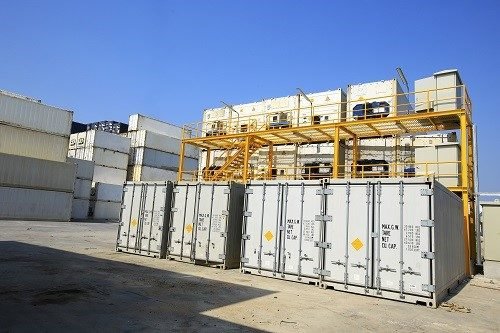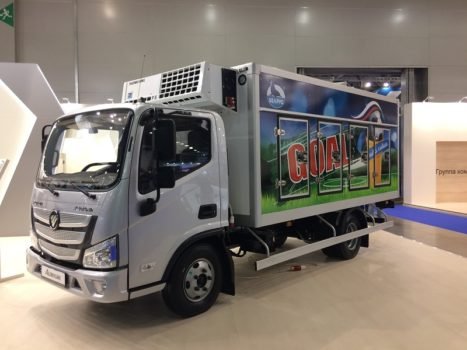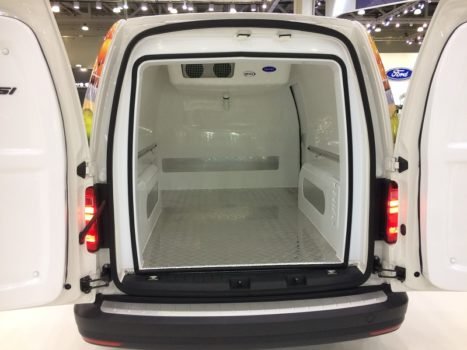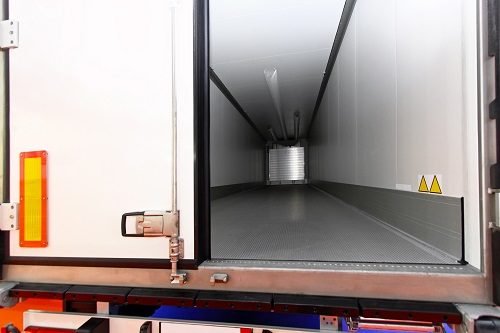Reefers include a transport equipped with the refrigeration unit and used for the transportation of perishable foods and other cargoes, requiring a certain temperature (drugs, chemicals, flowers, fruits, frozen foods).

Types of Reefers
By types of transport, the reefers are divided into:
- Refrigerated road transport − refrigerated truck and trailers equipped with the isothermal (insulated) vans;
- Reefer containers − marine reefers for transportation on the sea vessels; also used for a stationary storage;
- Refrigerated wagons − covered railway wagons intended for the carriage of perishable goods over long distances;
- Refriger vessels − special cargo ships equipped with refrigerated cargo holds. As a rule, they are used on fishing vessels to freeze and store the catch.

Temperature control Refrigerator Cargoes box at dockyard[/caption] On all these types of transport, as well as in warehouses, the refrigerated containers equipped with an autonomous refrigeration unit can be used. The refrigerated road transport is the most universal option for the delivery of the perishable goods. Thermally insulated cargo bodies on this transport are placed on:
- chassis of the car itself (cold storage car);
- on a semi-trailer (refrigerated semi-trailer) or
- on a trailer.

Classes of reefers
Depending on the temperature maintained, the cargo refrigerator can be referred to one of these classes:
- ‘A’ (+12 ... 0 °C, +53 ... +32 °F)
- ‘B’ (+12 ... -10 °C, +53 ... +14 °F)
- ‘C’ (+12 ... -20 °C, +53 ... -4°F)
- ‘D’ (not above +2 °C, +36 °F)
- ‘E’ (not higher than -10 °C, +14 °F)
- ‘F’ (not higher than -20 °C, -4°F)
A chilling unit of the refrigerator should provide the appropriate temperature in a body of the semitrailer − 12 hours, without additional maintenance of the unit. When certifying reefers, they are given the following marking:
- FNA − for the normal (with normal body thermal insulation) of Class ‘A’ reefers;
- FRA, FRB or FRC − for the reinforced (with reinforced body thermal insulation) Reefers of Class ‘A’, ‘B’ or ‘C’, respectively.
The certificate with the indication of the marking is issued for six years and is necessary for the operation of the refrigerated semitrailer in the countries of the European Union, as well as in Russia and the CIS. Later on (if the refrigerator complies with the technical requirements and successfully passed the testing), the certificate can be extended (three times for three years).
Construction of reefers
Walls of the refrigerated trailers, as a rule, are made of the monolithic sandwich panels (thickness 4-8 cm). The joints of the panels are sealed, and then masked and reinforced with the special framing elements to avoid the formation of thermal bridges.

A reliable thermal insulation of the doors is provided by a wear-resistant elastic rubber profile.
As the covering of refrigerated vehicles, it is applied by:
- galvanized (coated) sheet steel;
- laminated plywood;
- plywood reinforced with plastic;
- aluminum coated plate;
- stainless glossy steel.

Long lorry vehicle for cooling and freezing[/caption]
For the flooring it can be used:
- corrugated steel;
- galvanized steel;
- corrugated aluminum;
- polymer filling (including with abrasive).
A floor of the refrigerator can also be made in the form of a special sandwich panel, which significantly improves its isothermal characteristics.




